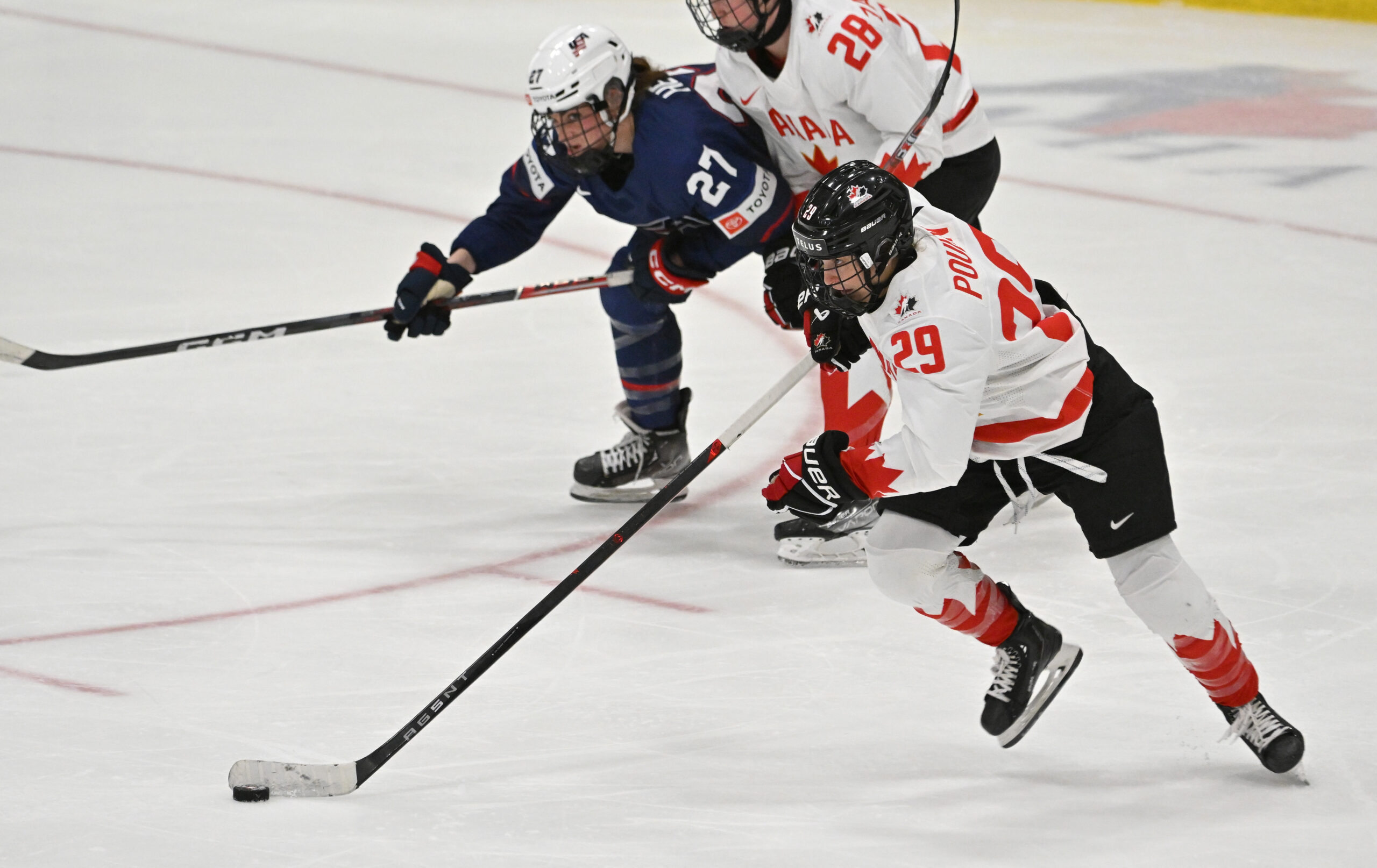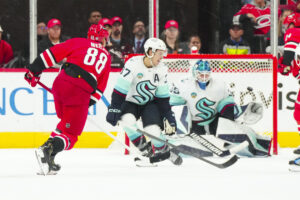Before the PWHL launched in 2023, many other women’s hockey leagues in North America had come and gone. While these other leagues may no longer exist, the PWHL has made many advancements and strides in the last century. The Canadian Women’s Hockey League (CWHL) launched in 2007 but ceased operations in 2019. Widely considered the highest level of women’s hockey in North America, many talented athletes, including Team Canada captain Marie-Philip Poulin and Team USA mainstay Hilary Knight, played there.
The Original NWHL
Before discussing the CWHL, we need to talk about the original NWHL. Unlike the more modern NWHL/PHF, founded in 2015, this NWHL ran from 1999 until 2007. This league fizzled out due to commissioner Susan Fennell stepping down in 2006. When Fennell left, the league was handed over to the Ontario Women’s Hockey Association to provide the next steps for the league. All the existing owners vacated their positions and the league ended.
Fennell, who was crucial in creating the NWHL, was the mayor of Brampton, Ontario, a Toronto suburb. She helped to develop the Brampton Thunder, an original team in the league. She had big dreams of creating a professional league, and she did just that.
“I want the women to have the respect they deserve,” she said to The Toronto Star in 2000. “To not have to pay to play or … buy their own sticks.”
In 2007, league players were looking for a new place to play. They pitched their idea to a group of business people to establish another league, building upon the momentum created by Fennell and the NWHL.
The Beginnings
The pitch worked, and the CWHL was formed. The league operated as a non-profit business. It covered the costs of basics and necessities ice time, uniforms, and travel. Meanwhile, given its status as a non-profit, the players were responsible for everything else. The players were not given any salaries. This was seemingly done for the love of the game and the potential to continue playing at a high level.
The CWHL launched with five original teams: The Brampton Thunder, Mississauga Chiefs, Ottawa Senators, Phénix du Québec, and Vaughan Flames. In addition, the Thunder were the first-ever CWHL champions. As seasons passed, the team that won the CWHL played against the Western Women’s Hockey League (WWHL) winner for the Clarkson Cup.
Named after Adrienne Clarkson, the former Governor General of Canada, it was commissioned by Fennell to be given to the top Canadian Team from the NWHL. However, due to an ownership dispute between the Inuit people, who designed the trophy, and Hockey Canada, the award wasn’t used until 2009. The first-ever Clarkson Cup winner was the Montreal Stars, who beat the WWHL’s Minnesota Whitecaps.
The Next Decade
The CWHL was now in full swing. The WWHL disbanded in 2011, and more teams, including one from Calgary and one from Toronto, joined the league. The first team in America was the Boston Blades, who joined in 2010. The CWHL even grew internationally, welcoming a team in China, the Kunlun Red Stars.
However, there were still some challenges in a non-profit league. Players had to pay to get drafted and submit a list of teams they were willing to be drafted by. Knight details moments when she would have to write a cheque to the Boston Blades general manager. She and her teammates had to each raise $350 to get their cheque back. That is how the league funded its teams. Their cheques would have been cashed, if they didn’t hit that dollar amount.
The teams didn’t have doctors, and players didn’t have insurance from the team. There were risks of playing professionally. Former CWHL player Jess Vella said to The Athletic in 2020, “I actually had to use my work benefits to get treatment and pay for it because I wasn’t covered,” after playing in a game and suffering a concussion. She had to wait out the rest of the game and then sit on a long bus ride back before booking her appointment for the injury.
The Competition
When the NWHL or PHF formed in 2015, a competitor was in the field. The new, shiny NWHL promised salaries, which was a big draw. A few players, including Knight, jumped over to the United States to test the league out. Still, the CWHL played on.
The Collapse
The CWHL players started getting paid in 2017. They received a minimum stipend of $2,000, and each team had a salary cap of $10,000. Commissioner Brenda Andress stepped down in 2018, and Janya Hefford was named her successor.
In 2019, the CWHL abruptly announced it would cease operations, noting its “economically unsustainable business model” as the main reason. The NWHL came out then as the only professional league in North America and announced expansion into Canada, just months after the dissolution of the CWHL.
While the league is no longer around, the CWHL was arguably the first successful North American women’s hockey league. Just look at how many years it ran. As the PWHL continues to grow and build upon year one, the CWHL can be considered a model for expansion and pride as the sport develops professionally.
Main photo: Dan Hamilton-USA TODAY Sports






